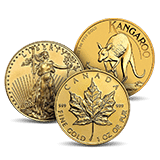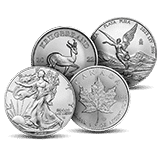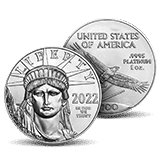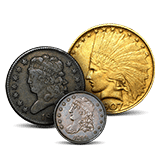
Silver ETFs present a unique proposition for investors seeking exposure to the precious metals market. Silver, often overshadowed by its more illustrious cousin gold, holds significant industrial and investment value, making silver ETFs an attractive option for a diversified portfolio.
Silver ETFs
Silver ETFs are exchange-traded funds that track the price of silver. They are designed to mirror the performance of the silver market, with each share representing a fixed amount of silver, usually measured in ounces. These funds hold physical silver bullion in secure vaults or track the silver price through futures contracts or other derivative instruments.
Silver ETFs offer a convenient and liquid means of investment. They trade on major stock exchanges, allowing investors to buy and sell shares during market hours.
Types of Silver ETFs
- Physically Backed Silver ETFs: These ETFs hold actual silver bullion in vaults. The value of the ETF (Exchange Traded Funds) shares is linked to the spot price of silver minus the fund’s expenses. When an investor buys shares of a physically backed silver ETF, they are purchasing a share of the ownership in the physical silver held by the fund.
- Synthetic Silver ETFs: Synthetic silver ETFs, on the other hand, use financial derivatives like futures and options to emulate silver performance. These do not involve owning physical silver but instead contracts that bet on the price movement of silver.
Benefits of Investing in Silver ETFs
Diversification
Silver ETFs offer a straightforward method to diversify an investment portfolio. Silver often has a low correlation with other asset classes like stocks and bonds, which can help reduce overall portfolio risk.
Liquidity
Since silver ETFs are traded on stock exchanges, they can be bought and sold throughout the trading day, offering high liquidity compared to physical silver holdings.
Cost-Effectiveness
By eliminating the need for physical storage, silver ETFs can be a more cost-effective method for investors to gain exposure to silver.
Accessibility
For smaller investors, accumulating enough physical silver to achieve a meaningful level of exposure can be challenging. Silver ETFs allow these investors to participate in the silver market with less capital.
Silver ETF Risks
Volatility
The price of silver can be highly volatile. Factors like industrial demand, currency fluctuations, and investor sentiment can lead to significant price swings.
Counterparty Risk
In the case of synthetic silver ETFs, there is a risk that the counterparty to the derivative contracts could default, which could impact the value of the ETF.
Tracking Error
ETFs might not perfectly mirror the price of silver due to fees, expenses, and the potential for slight discrepancies between the silver price and the ETF’s actual holdings or contracts.
Market Risk
Like any traded asset, silver ETFs are subject to market risks, including changes in interest rates, inflation expectations, and global economic conditions.
Silver ETFs vs. Other Silver Investments
When considering silver ETFs, it is vital to compare them with other forms of silver investment, such as physical coins and silver bars, silver mining stocks, and silver mutual funds.
Physical Silver: Physical silver has the advantage of tangibility but comes with the drawbacks of storage, insurance, and potentially less liquidity.
Mining Stocks: Silver mining stocks offer leverage to the price of silver, but they also carry company-specific risks such as operational efficiency, management decisions, and geographical risks.
Mutal Funds: Silver mutual funds may provide a diversified approach to the silver market but can come with higher fees and less transparency than ETFs.
Silver ETFs stand out due to their blend of liquidity, price transparency, and ease of access, which can make them a preferable choice for certain investors.
Silver ETF Organizations
While we cannot recommend one ETF over another, here are a few options:
- iShares Silver Trust (SLV): Managed by BlackRock, SLV is one of the largest and most popular silver ETFs. It seeks to reflect the performance of the price of silver bullion, less the Trust’s expenses and liabilities.
- Aberdeen Standard Physical Silver Shares ETF (SIVR): Aberdeen Standard Investments offers this ETF, which aims to provide investors with a return equivalent to movements in the silver spot price, less fees.
- ETFS Physical Silver Shares (SIVR): Provided by ETF Securities, it is designed to offer investors a simple, cost-efficient, and secure way to access silver by providing a return equivalent to the movements in the silver spot price.
- Invesco DB Silver Fund (DBS): This ETF is part of Invesco’s fund suite and tracks the DBIQ Optimum Yield Silver Index Excess Return™, which is intended to reflect the changes in the market value of silver.
- ProShares Ultra Silver (AGQ): ProShares offers this leveraged ETF, which reports to provide 2x the daily return of silver bullion as measured by the U.S. Dollar fixing price for delivery in London.
- Global X Silver Miners ETF (SIL): While not a direct investment in silver, this ETF provides exposure to a broad range of silver mining companies and access to the silver market indirectly.
- Horizons Silver ETF (HUZ): Horizons ETFs Management offers this ETF, which replicates the performance of the Solactive Silver Front Month MD Rolling Futures Index ER.
You must thoroughly research or consult with financial advisors before investing in any ETFs, as the performance and management of these funds can change. Additionally, the landscape of financial products is continually evolving, with new products being introduced and existing ones being changed or delisted. Always check the latest information and on the official websites or financial databases for the most current details.
Tax Implications of Silver ETFs
Investing in silver ETFs may have tax implications, which may be complex and vary depending on the specific type of ETF and the tax laws of the investor’s country of residence. Generally, within the U.S., you may be subjected to capital gains tax if you earn a profit selling silver. Tax obligations also vary depending on how long you hold the assets.
Short-term Capital Gains
Profits generated from the sale of silver held for one year or less fall into the category of short-term capital gains. These gains are subject to taxation at the same rates as your ordinary income, with the maximum tax rate capped at 28 percent.
Long-term Capital Gains
When silver is held for a period exceeding one year before its sale, any sales profits are treated as long-term capital gains. These gains are eligible for taxation at rates generally lower than those applied to ordinary income. The tax rates for long-term capital gains can differ based on several factors.
Record Keeping
Investors in silver ETFs should maintain thorough records of their purchases, sales, and any distributions received. Tax reporting for ETFs is generally done using Form 1099-B for sales transactions, and the specific tax treatment should be detailed in the fund’s prospectus or annual tax statement.
How Much do Silver ETFs Cost?
Silver ETFs do incur fees. The yearly fees are based on the holding amount. The expense ratio ranges from about .5 to .75%. These fees usually cover insurance, storage costs, and operational costs. Brokerage commissions may also be added. You will want to carefully review the costs involved before choosing an ETF.
Counterparty Risk
Counterparty risk in the context of Silver ETFs refers to the potential risk that the other party involved in a financial contract may not fulfill their obligations. This risk is relevant to different types of silver ETFs, particularly those that are not physically backed by silver but use contracts or derivatives to track the price of silver.
Physically Backed Silver ETFs
In physically backed silver ETFs, the counterparty risk is generally lower because the ETF holds actual silver in a vault. The primary risks in this case relate to the security and operation of the vault, the integrity of the fund management, and the custodians who oversee the physical silver. However, there could still be counterparty risk if the ETF lends silver to other parties or engages in other transactions where another party is obligated to deliver silver or cash to the ETF. The only way to attempt to avoid issues with this type of ETF is to work with a reputable organization.
Synthetic Silver ETFs
Synthetic silver ETFs use instruments like swaps, futures, and other derivatives to replicate the performance of silver. The ETF enters contracts with counterparties—often financial institutions—that promise to pay the return of silver in exchange for fees or other benefits. If all parties do not or cannot keep their agreements risk may occur. Again, you may minimize your risk if you choose a respected company.
Silver Bullion Storage
Many are concerned that if they do not hold their precious metals, they may be at risk. For physically-backed silver ETFs, the actual silver is held in secure vaults that are typically operated by reputable custodians.
These custodians can be major banks or firms that specialize in precious metals storage. For example, silver may be held in J.P. Morgan Chase Bank vaults or vaults in London or Zurich.
If you are interested in silver ETFs, research each fund’s storage practices and consider how those might align with your investment goals and risk tolerance. The security, legal, and operational aspects of the storage can affect the overall risk profile of the investment.
When researching ETFs, you may want to consider,
- Security and Insurance: Ensure that the vaults where the silver is stored are high-security facilities and that the silver is insured.
- Audits: Review their auditing and record-keeping processes.
- Transparency: Do they provide serial numbers for your holdings?
- Geographical Diversification: Do they provide geo-diverse vault locations?
- Allocated vs. Unallocated Silver: Are your bars allocated or unallocated?
As with all investments, due diligence is essential. You must assess your risk tolerance and investment horizon and understand the underlying assets within the ETFs. Given the complexities associated with the pricing of silver and the structure of some ETFs, investors are often advised to seek professional guidance to ensure that their investment in silver ETFs aligns with their overall financial strategy.




